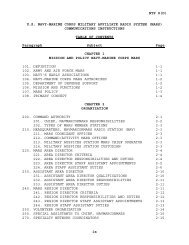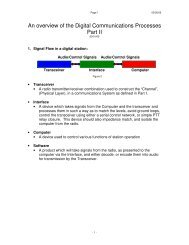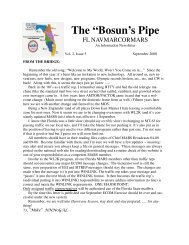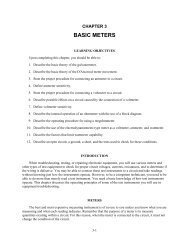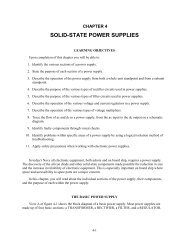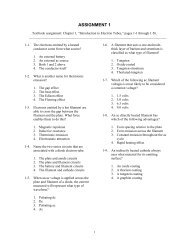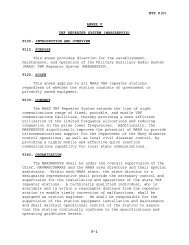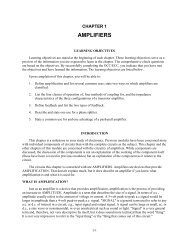You also want an ePaper? Increase the reach of your titles
YUMPU automatically turns print PDFs into web optimized ePapers that Google loves.
Figure 1-26.—Series grid-leak biasing.In summary, grid-leak bias causes the grid to draw current when the input signal goes positive. Thisgrid current (which is a negative charge) is stored by the coupling capacitor (C c ,) which will keep the gridat some negative potential. It is this potential that biases the tube.Q21. What type of bias requires constant current flow through the cathode circuit of a triode?Q22. When a circuit uses cathode biasing, the input signal can cause variations in the biasing levelHow is this problem eliminated?Q23. In a circuit using grid-leak biasing, the coupling capacitor (C c ) charges through a lowresistance path. What resistance is used in this charge path?Q24. Grid-leak biasing in effect rectifies the input ac signal. What feature of the circuit is used toaccomplish this rectification?OPERATING CLASSIFICATIONS OF TUBE AMPLIFIERSWhile the discussion of amplifiers will be covered in detail in later NEETS modules, some discussionof the classes of operation of an amplifier is needed at this point. This is because their operation class isdirectly determined by the bias voltage of the tube.The classification of amplifiers by operation is based on the percentage of the time that the tubeconducts when an input signal is applied. Under this system amplifiers may be divided into four mainclasses: A, AB, B, and C.CLASS A OPERATIONAn amplifier biased into Class A operation, is one in which conduction through the tube occursthroughout the duration of the input signal. Such an amplifier is shown in figure 1-27, view A. This is thesame type of circuit with which you are already familiar. Notice when you compare the input to theoutput that the tube is always conducting, and that the entire input signal is reproduced at the output.1-36





